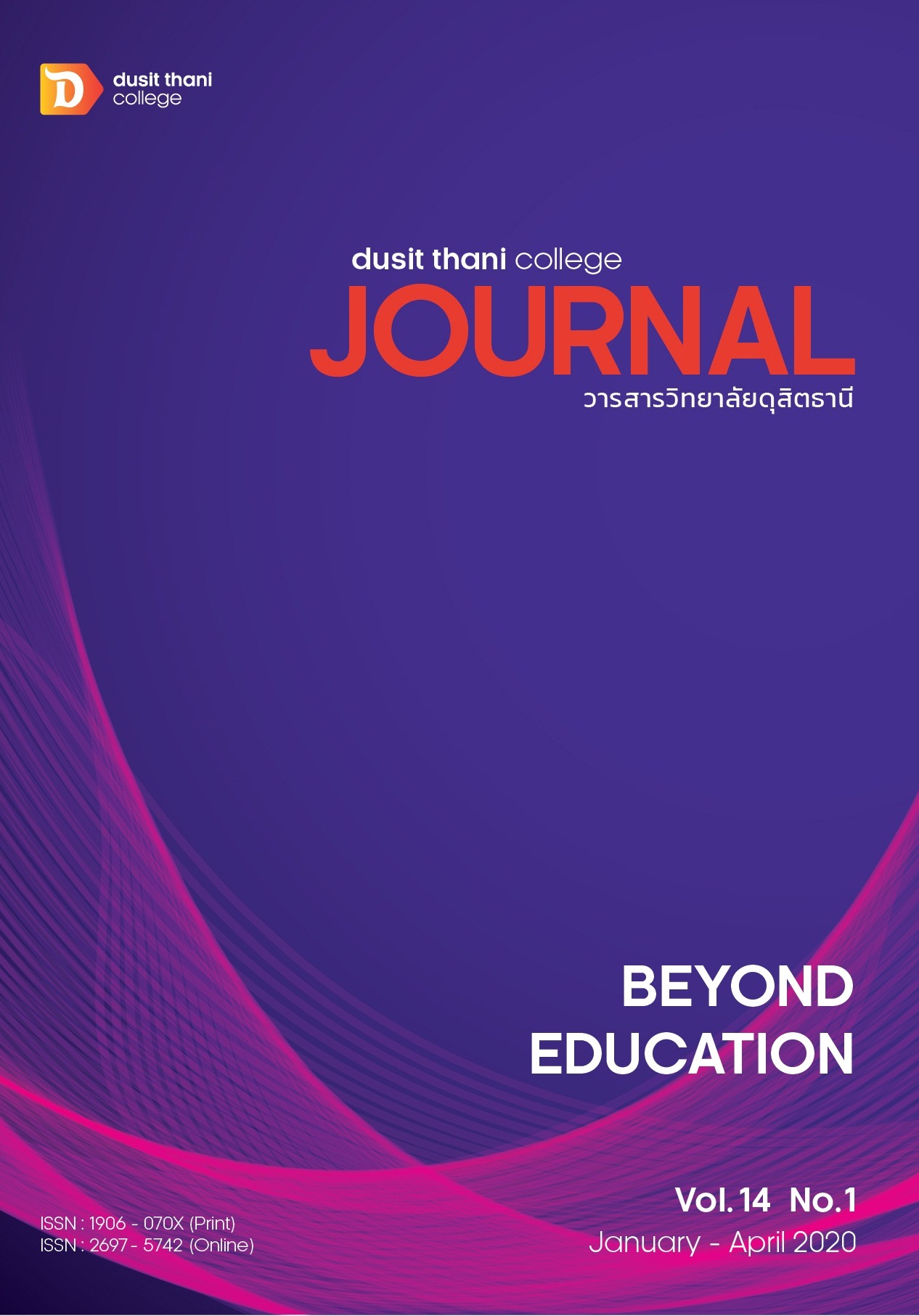Factors Relating to Consumer Behavior in a BBQ Buffet Restaurant: A Case Study of Nuanoey Buffet Ko-khun & Seafood Restaurant
Main Article Content
Abstract
This research aimed to study factors relating to consumer behavior in a BBQ buffet restaurant: a case study of Nuanoey Buffet Ko-khun & Seafood restaurant. It had two main objectives which were 1) to understand the consumers’ demographic characteristics, consumer behavior, and the marketing mix of Nuanoey Ko - khun & Seafood restaurant, 2) to study the correlation of the consumers’ demographic characteristics and the marketing mix, and the correlation of the consumers’ demographic characteristics and consumer behavior in Nuanoey Ko - khun & Seafood Buffet restaurant. Researchers of the present study followed a quantitative approach, using questionnaires on 400 samples during October 2018 to March 2019. The descriptive statistics and Chi-square analysis were used in the analysis.
The results showed that the majority of the consumers at Nuanoey Ko - khun & Seafood Buffet were female (70.75%). Estimate half of the consumers age between 21 - 30 years old (54.75%). Also, around half of the consumers have background in rural areas (57.75%). 38.50% of the consumers were student and 37.5% of the consumers used the service with his or her friends. Estimate half of the consumers considered that the price of BBQ buffet restaurant should range between 201-300 Baht (52%). The main factor people used in choosing the BBQ buffet is the delicious taste (34.25%). The most popular menu is seafood (40%). There are some correlations between the consumers’ demographic characteristics and behavior. Also there are some correlations between the consumers’ demographic characteristics and marketing mix.
Article Details
Article Screening Policy
- All research and academic articles to be published must be considered and screened by three peer reviews in the relevant field / article.
- All articles, texts, illustrations and tables published in the journal are the personal opinions of the authors. Editors don't always have to agree. And no responsibility whatsoever is the sole responsibility of the author.
- The articles to be published must never be published. Where did you first publish? And not in the consideration of other journals If the audit found that there has been a duplicate publication It is the sole responsibility of the author.
- Any article that the reader sees as being plagiarized or impersonated without reference. Or mislead the work of the author Please let the journal editor know it will be your greatest blessing.
References
Perceptions, evaluations, and satisfactions. Russell Sage Foundation.
2. Chaisomphon Chaoprasert (1998). Services Marketing. Bangkok: Se-Education.
3. Cochran, W.G. (1953), Sampling Techniques, 1st ed., Oxford, England: John Wiley
4. Etzel, M. J., Walker, B. J., & Stanton, W. J. (2001). Marketing. (12th ed.). Boston:
McGraw-Hill.
5. Inkaew Supannee (2006). Marketing for specific service business. Bangkok: Tanapress
6. Kasikorn Research Center (2018). Restaurant Business: Expected to Rise 4-5% in 2018.
Retrieved on October 1, 2019 from https://kasikornresearch.com/en/analysis/k-
econ/business/Pages/36841.aspx
7. Kotler, P. (1993). Marketing management: Analysis, Planning and control (5th ed).
Englewood Cliffs, New Jersey: Prentice-Hall.
8. Kotler, P., & Armstrong, G. (2001). Principles of marketing. (9th ed.). New Jersey: Prentice-Hall.
9. Meejinda Panisa (2010). Consumer Behavior. Bangkok: Thammasarn
10. Samerjai Chattayaporn (2002). Consumer Behavior. Bangkok: Expernet
11. Schiffman, L., & Kanuk, L. (2007). Consumer behavior. New Jersey: Prentice Hall.
12. Sereerat Siriwan, Laksitanon Prin and Sereerat Suporn (2009). The New Marketing Era.
Bangkok: Diamond in Business World.
13. Sereerat Suporn (2000). Consumer Behavior. Bangkok: Dokya publishing
14. Thongsawet Wanee (2005). Satisfaction of Clienteles in The Library of Kuakarun College of Nursing. Bangkok: Kuakarun College of Nursing


